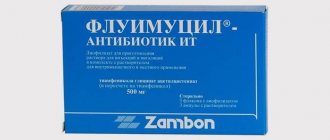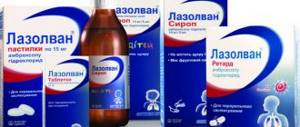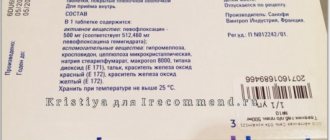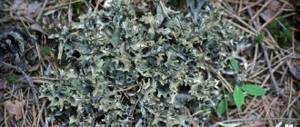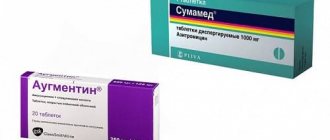For complete treatment, an integrated approach is needed. Initially, you need to find out what kind of disease has affected the body, since the symptoms often overlap, but the treatment is different. Sinusitis is currently well studied, the doctor can easily diagnose it in the initial stages and can prescribe for treatment, among other things, “Fluimucil - antibiotic IT” (FA IT) in the form of inhalations.
What is sinusitis?
Before taking Fluimucil - an IT antibiotic, you need to determine whether you really have sinusitis, since the symptoms are reminiscent of diseases such as colds, ARVI, runny nose and even flu.
The main symptoms of sinusitis.
- Blockage of mucus or other secretions, including purulent substances, in the nasal cavity.
- Pain that can be crippling and can be reflected in any area of the head. In particular, painful sensations arise and persist for a long time both in the nose and in the projection of the maxillary sinuses.
- Fullness and feeling of pressure in the projection of the paranasal sinuses.
- Swelling of the soft tissues of the face and eyelids.
- A decrease in the overall tone of the body, which manifests itself in weakness, rapid fatigue, even when doing usual things.
- Body temperature can rise to high values of 38 - 40 º C.
- Paroxysmal cough.
- Sleep patterns are disrupted and memory deteriorates.
It is similar to the symptoms of ordinary flu, but there are fundamental differences, primarily regarding local symptoms. In case of bacterial sinusitis, nasal congestion, rhinorrhea and pain are not eliminated by symptomatic medications, so it is worth using a serious antibiotic, in particular, it could be “Fluimucil - IT antibiotic”.
Composition of the drug "Fluimucil - antibiotic IT"
The main active ingredient of the drug is a complex compound that combines acetylcysteine and thiamphenicol. The latter refers to broad-spectrum antibacterial drugs.
Thiamphenicol, being an antibiotic, has a bactericidal effect - so pathogenic bacteria no longer synthesize the protein of their cell membranes, which inhibits their reproduction.
The drug is active against:
- gram-positive bacteria (streptococci, corynebacteria, staphylococci, litseria, clostridia);
- gram-negative (Haemophilus influenzae, Neisseria, Salmonella, Escherichia coli, Shigella and others).
Acetylcysteine helps facilitate the penetration of the antibiotic thiamphenicol into the lung tissue, and also inhibits the sedimentation of bacteria on the mucous membrane of the respiratory tract.
Differences between “Fluimucil - IT antibiotic” and simple “Fluimucil”
First of all, you need to separate two drugs with the same word in the name, but completely different in their effects and fundamentally different in their components.
So, there is simply “Fluimucil”, which contains a maximum concentration of acetylcysteine - a mucolytic agent, which is contained in a diluted form both in FA IT and in other drugs, for example, “Rinofluimucil”.
This component serves to ensure that the patient can freely expectorate sputum and excess mucus or purulent exudate formed in the paranasal sinuses and nasal cavity. Acetylcysteine destroys molecular bonds, diluting sputum, which acts as a favorable environment for the growth and reproduction of pathogenic microorganisms, thereby indirectly helping to reduce bacterial contamination.
In addition to acetylcysteine (ACC), Fluimucil - an IT antibiotic contains a second active ingredient - Thiamphenicol.
Side effects
Unfortunately, there are no perfect and universal medicines that suit absolutely everyone. Each person may have a reaction to the substances included in the drug.
Regarding “Fluimucil - IT antibiotic” there are not many side effects, because it does not reach the most vulnerable place - the gastrointestinal tract, which means that the intestinal microflora does not receive any effect, not a single beneficial bacteria in your intestines will be harmed. But for diseases of the ear and throat, the therapeutic effect is priceless.
But not everything is so perfect; side effects also occur in a number of cases and are sometimes pronounced:
- severe but short-term cough. You can avoid mucus discharge and cough if you follow the correct breathing technique when inhaling;
- burning, sore and irritating sensations in the nasopharynx. You have to be patient, it happens to many, but it goes away on its own and usually does not reach a painful and unbearable state;
- development of rhinitis. Symptoms of inflammation occur with hypersensitivity to the components of the drug;
- vomiting or nausea. It happens when the drug is abused, the permissible doses are exceeded;
- bronchospasm;
- individual allergic reactions;
- stomatitis.
Contraindications
- Exacerbations of diseases of the gastrointestinal tract (chronic gastritis, peptic ulcer, cholecystitis, pancreatitis, colitis).
- Effervescent tablets are prohibited for people under 18 years of age.
- Children under two years of age, pregnant and lactating mothers may only take it for health reasons with the permission of a doctor.
Fluimucil should be taken with caution by persons with chronic diseases of the kidneys, liver, respiratory system, hypertension, and bronchial asthma. You must always remember about individual sensitivity to the drug.
Contraindications to the use of "Fluimucil - IT antibiotic"
The drug is contraindicated in:
- anemia;
- leukopenia;
- thrombocytopenia;
- hypersensitivity to one of the components of the drug.
The drug should be taken with caution in the presence of liver failure and chronic renal failure and in children under 2 years of age, due to age-related characteristics of kidney function.
Pregnant women are not recommended, but are not prohibited, since in some cases the benefits outweigh the negative effects. If it is necessary to take the drug during breastfeeding, then during therapy you should stop feeding the baby with breasts and expressed breast milk.
Antibiotic nasal drops for children
Isofra®
Main article: Instructions for use of Isofra® with analogues and reviews
An effective spray for sinusitis with an antibiotic. The active component of the drug Framycetin is an antibiotic of the anminoglycoside series. The product has a pronounced bactericidal effect and a wide spectrum of action. Capable of creating high therapeutic concentrations in the mucous membranes lining the paranasal sinuses.
The advantage of the drug also includes a small percentage of systemic absorption when applied topically. Isofra® spray is effective against gram- and gram+ pathogens. However, framycetin does not act on treponema, anaerobic flora and some strains of streptococcus.
A nasal spray with an antibiotic is used for bacterial rhinitis and nasopharyngitis, sinusitis (including sinusitis), as well as for the prevention of bacterial complications after surgical interventions on the paranasal sinuses.
The product is not used for the purpose of washing the paranasal sinuses, and is not prescribed to infants under one year of age or to pregnant women. When prescribing Isofra® during lactation, it is necessary to temporarily stop breastfeeding.
The duration of treatment should be agreed with the attending physician. Frequent use of the spray or exceeding the recommended duration of treatment can cause the development of antibiotic-resistant strains and also lead to superinfection.
Undesirable effects are quite rare due to minimal systemic absorption. As a rule, they can be manifested by burning and dryness of the mucous membranes, and local allergic manifestations. If the duration of treatment is not observed, superinfection may develop.
Frequency of use and recommended dosages
Children are prescribed one spray into each nostril three times a day, at equal time intervals.
Adults spray one dose into each nasal passage four to six times a day. Drops must be instilled 1-2 drops at a time. from 4 to six times a day. The duration of the course should not exceed 10 days. It is recommended that children be prescribed an antibiotic for up to seven days (up to 10 days only in case of severe illness after consultation with the attending physician). Similar drops for purulent runny nose with an antibiotic (Framycetin) are produced under the trade name Rinil®.
Read further: Inexpensive antiviral nasal drops for runny nose and colds
Directions for use and dosage
For inhalation use in adults, the recommended dosage is 250 mg 1 - 2 times a day; children - 125 mg 1 - 2 times a day.
Local application
To administer the medicine into the paranasal sinuses, you need 1 - 2 ml of solution (for adults, dissolve in 4 ml of water for injection - 500 mg of dry matter, for children - 250 mg).
Moreover, this procedure should be carried out only in a medical institution.
Features of application. We use a nebulizer
Before inhalation, everything must be carefully prepared.
Doctors and specialists advise using a compression nebulizer - a special inhaler designed to strictly adhere to dosages and create an aerosol with a certain particle size.
There are a number of recommendations for preparing your body to take Fluimucil - an IT antibiotic:
- clean the mucous membrane of everything foreign, rid the nasal passages of mucus. You can take medicine for a runny nose, drops or spray, which will clear the nasal cavity at least temporarily. If a warm saline solution helps, that’s ideal, otherwise effective drops are needed;
- Eating should be completed some time before inhalation in order to adjust your body to a calm mood;
- During the procedure there should be even breathing.
It is difficult to comply with these requirements during an acute illness, but these are the recommendations of specialists and in order to avoid complications it is better to follow them.
Inhalation
- Wearing rubber gloves, disinfect the nebulizer before starting the procedure.
- The packaging of “Fluimucil - IT antibiotic” contains detailed instructions on how to mix the solution for the inhalation procedure, which must be strictly followed in order to comply with all the rules. 4 ml of water (it comes with the drug) per 1 ampoule is the standard.
- If you take the ready-made solution, which is contained in ampoules, then you just need to open the ampoule.
- Do not allow the product to come into contact with rubber surfaces or metal products.
- Using a syringe, carefully inject the mixture into the nebulizer reservoir.
- Using special nose attachments or a mask, we begin the inhalation procedure and carry out one procedure from 3 to 12 minutes, depending on the age and individual characteristics of the body.
Do not try to prepare inhalation materials for future use for the entire course; mix immediately before use so that the product does not deteriorate or lose its healing properties.
Inhalation therapy
Fluimucil for sinusitis is most often used in the form of inhalation. To carry it out, you will need a compression nebulizer, since an ultrasonic inhaler can destroy medicinal substances.
Before inhalation, the nebulizer is disinfected. Then prepare a solution of the drug Fluimucil-antibiotic IT by mixing the lyophilisate and solvent. Next, measure out the required dose of medication using a syringe and transfer it to the inhaler reservoir. The prepared solution cannot be stored, since the active substance is quickly destroyed and does not have a therapeutic effect.
If Fluimucil solution is used, then the required amount is immediately placed in the reservoir. An open ampoule with solution can be stored for 24 hours and used only for inhalation.
Before the procedure begins, the nasal passages are cleared of mucus using saline drops or sprays. Flushing the sinuses helps the medicine reach the site of inflammation. Inhalation is carried out using nasal attachments. Its duration usually ranges from 3 to 7 minutes. The course of therapy is no more than 10 days.

